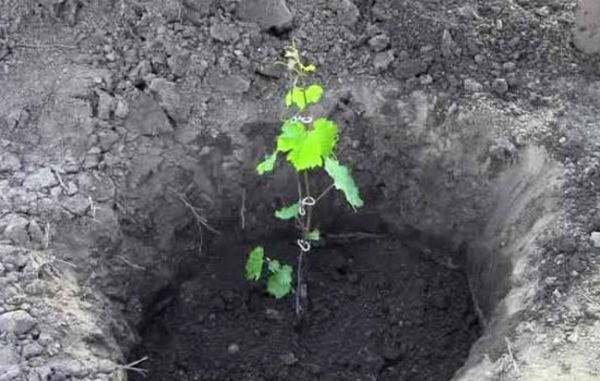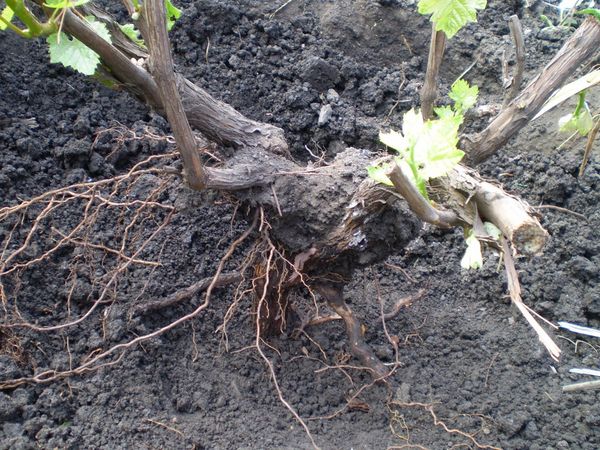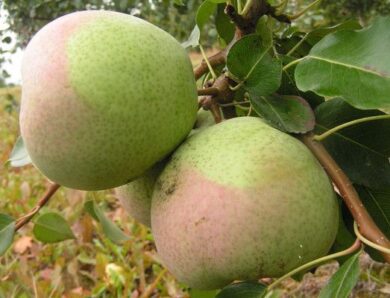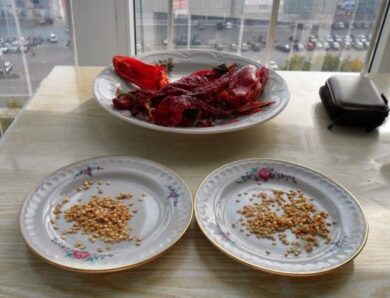
When to transplant grapes: in summer, in spring or autumn
Only experienced and error-trained gardeners have a sense and know, how to not only plant a plant, but also how and when to transplant it without harm. Grapes are a very popular crop, so today we will tell you how to transplant an adult grape bush in spring or autumn, and which transplant methods are optimal.
Features of transplantation of different species
Transplanting grapes to a new location depends on several main factors: his kind, time of year, age of the plant. Each type of grape has its own characteristics of cultivation, care and transplantation. For wildlife, conditions do not play a big role: it is quite stable and unpretentious. Cultivated and domesticated variety of wild - maiden - also does not require special care, since genetically inherited the stability of the "father".

The vines of these species are strong and fast, in a few years they can completely cover a small building. So the only concern will be pruning the plant. Such grapes are grown exclusively for decorative purposes. Wild does not bear fruit, and maiden berries are unattractive in terms of taste characteristics and are not suitable for eating. The best use of these types of plants will be the decor of the facade of the building, fences, arches.
When and how to transplant such grapes does not matter, the main thing, choose the right one (preferably a lighted place and wait for favorable weather conditions. Grapes require the opposite approach, the purpose of which is to obtain a bountiful harvest with delicious berries. That is why all the processes of caring for grapes should be given more attention and care.
At what age you need to transplant
When it is better to transplant grapes, the plant itself will tell you. Old and young shrubs tolerate the procedure differently, for each there are nuances of transplantation. Older grapes have a well-developed root system, so dig it up, without damaging the roots, it will be difficult. Certainly, you can try, but that fact should be taken into account, that damaged roots will not change so quickly, and the plant will take root in the new place longer. in addition, imbalance between the roots and the aboveground part of the shrub can affect fruiting.

Optimal age, when you can transplant grapes, without risking harm to him, is considered 7-8 years. However, without the urgent need to transplant the plant is still not worth it. The reaction of the bush is unpredictable and even the slightest interference in the processes of growth and development can provoke a painful reaction. The susceptibility to phylloxera also increases. If you can not do without the procedure, then you should take care of the right place, time, method and tool.
Most growers prefer to transplant grapes in the fall, when the bush, dropping leaves, goes to rest, but the growth of the root system did not stop. How to transplant grapes to another place in the spring? This can be done only before the juice movement, when the soil thaws, the frosts will end and the warm temperature will be established. Transplanting grapes in summer is highly undesirable, but possible.

Transplanting grapes in the fall has certain advantages:
- a wide selection of varieties available for planting;
- well moisturized, not yet cold ground;
- in the southern regions, where the soil does not freeze to the depth of the roots, the root system will grow;
- vine, transplanted spring plants, may not strengthen enough and suffer from heat. For a shrub transplanted in the fall, this possibility is excluded.
What rules to follow

You can avoid damage to the plant and protect it from disease by following these rules:
- Dig up the grapes with a small lump of earth, which entails roots - so you do not damage the roots. If the adult grapes were dug without a lump of earth, then the first years it should not be pruned - just remove the inflorescence.
- Prepare a transplant hole in advance: loosen the soil, moisturize and fertilize. That the soil finally settled, this should be done at least a month before planting.
- Transplant the bush should be carefully inspected and identified, how many and which to prune shoots. If the root system is damaged or the grapes are very old, then it is better to cut the ground part completely.
- Do not transplant the plant to the same place, where this culture used to grow (pose a risk of soil depletion and the possibility of disease).
The main ways
The main ways to move the grapes are: grafting, removal and planting of seedlings. When you can avoid digging up an old plant, then you need to use a tap. If the plant is old or you need to move it nearby, then choose a strong vine and dig it. When it takes root and strengthens, the old bush can be removed.

Then the shoots are left for a few buds and placed in a solution of water and growth stimulant. The readiness of the petiole for planting is determined by the presence of protruding from the cut light green liquid. Before planting the seedlings for a while placed in a special substrate, which includes: sod land, humus, sand and sawdust.
For a good result of the procedure of transplanting adult grapes you need to prepare the necessary tools, the bush itself and the pit. You will need it for the procedure: shovel, secateurs, clay, organic and mineral fertilizers. The bush is carefully dug, trying not to touch the roots, cut the vine to 20 cm, treat slices with garden pitch or wax. Then the roots are placed for some time in a clay-manure solution, then carefully placed in the pit.
As mentioned earlier, the pit should be ready in a month. To start the bush faster, you can add barley seeds and a little iron fertilizer. Under the bush several times pour the soil and watered.
Grapes can be transplanted in several ways: with a lump of earth, with bare roots and without land. Each of these methods has its own order and nuances. Therefore, before transplanting grapes to a new location, get to know everyone in detail, and select the optimal one.
Further care
The main thing, move the plant before or after frosts. It is not necessary to feed grapes in addition, enough fertilizer for the first year, made before planting. The main thing, water the plant regularly - infrequently, but enough. In July-August, the number of waterings can be increased (if hot, and precipitation is rare). For the winter the grapes need to be covered, but not required, if the variety is winter hardy, and frosts are small.
Follow the above tips and you will succeed!
Video "Grape bush transplant"
In this video you will learn how to transplant a vine.




